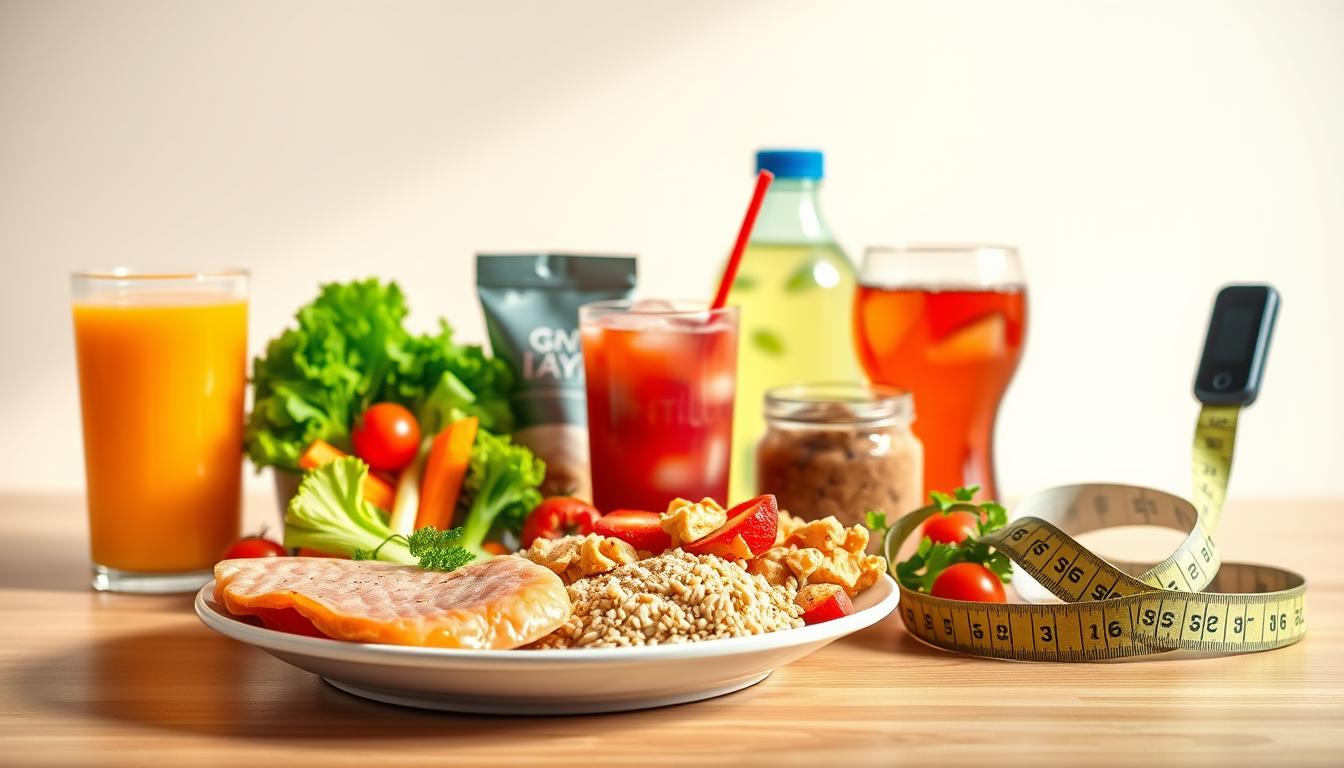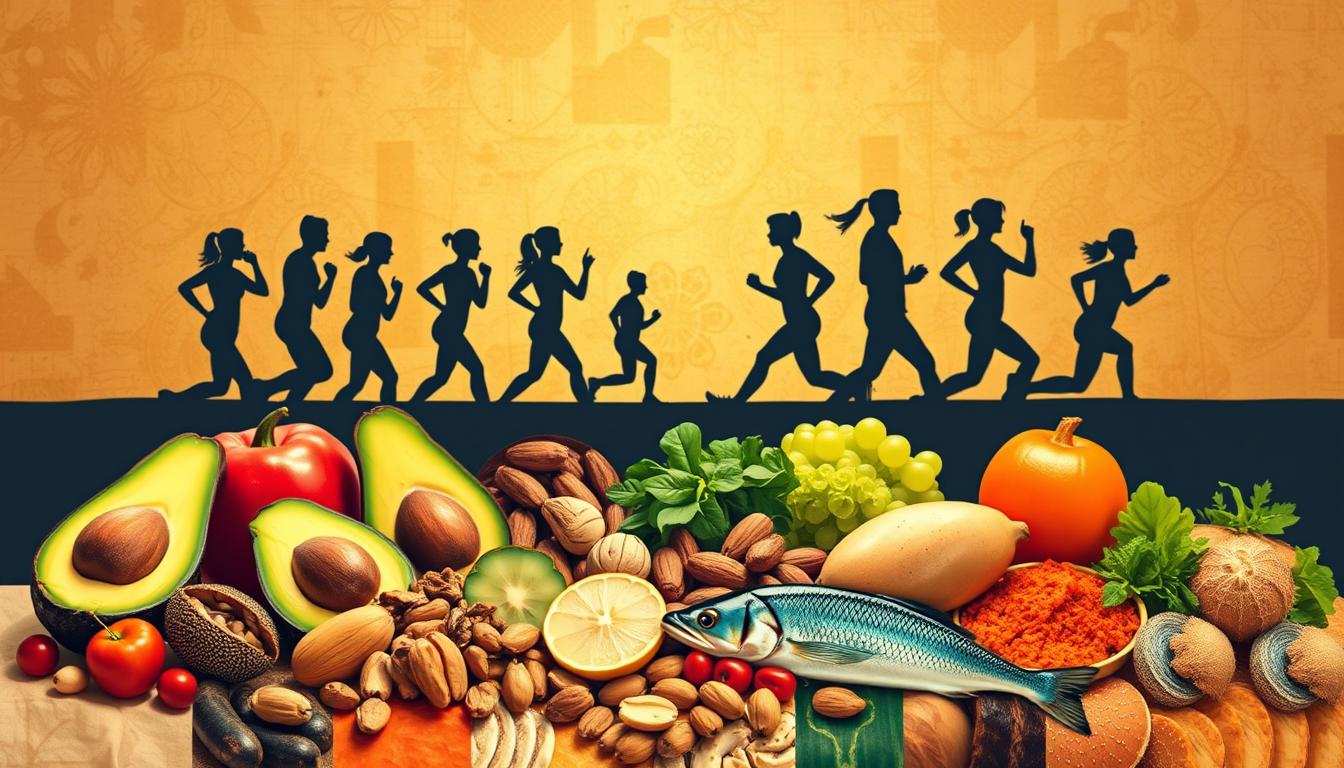Does the idea of permanent weight management seem impossible when you love pizza nights or desserts? You’re not alone. The Mayo Clinic found 83% of people regain weight within two years on restrictive diets. The key is to build habits that work with your lifestyle, not against it.
This method lets you enjoy burgers, pasta, and weekend treats while losing fat. Forget counting calories or avoiding carbs. Small, consistent changes in what you eat and do are better for long-term success than strict rules.
We’ll teach you how to rebalance meals, move more, and still enjoy your favorite foods. No more “cheat days” or feeling guilty. Just science-backed ways that fit into your life.
Key Takeaways
- Lasting results come from habit changes, not short-term restrictions
- Mayo Clinic data shows balanced nutrition beats crash diets
- Favorite foods can stay in your meal rotation with smart planning
- Activity adjustments matter more than gym marathons
- Mindset shifts help prevent rebound weight gain
5 Proven Strategies to Keep Your Favorite Foods While Losing Fat
Enjoying foods like pizza or ice cream doesn’t mean you have to give up on fitness. These methods let you enjoy your cravings while shaping sustainable diet strategies for fat loss. Let’s explore ways to upgrade your meals without feeling deprived.
1. Prioritize Protein and Fiber-Rich Foods
Why protein and fiber keep you satisfied
Protein makes you feel full by releasing hormones like GLP-1. Fiber slows down digestion. Together, they keep hunger away for 3-4 hours longer than sugary snacks. Try these swaps:
- Greek yogurt with berries instead of flavored varieties
- Lentil pasta rather than regular noodles
Easy food swaps that boost nutrition
Make common favorites healthier without losing flavor:
- Cauliflower rice under stir-fries (saves 150 calories/cup)
- Chickpea flour in pancakes for extra protein
2. Master Mindful Portion Control
Using hand measurements for serving sizes
Your palm is a guide for protein portions, your fist for veggies. This no-scale method works anywhere:
“Hand-based measurements help 78% of dieters maintain weight loss long-term.”
The 20-minute rule to prevent overeating
Pause halfway through meals. It takes 15-20 minutes for fullness signals to reach your brain. Drink water, then decide if you truly need seconds.
3. Schedule Strategic Indulgence Days
How planned treats prevent binge eating
Set aside 1-2 weekly “joy meals” for your favorites. This structure reduces impulsive snacking by 41% according to behavioral research.
Creating your personal 80/20 balance
Eat nutrient-dense foods 80% of the time, save 20% for enjoyment. For example, add chocolate chips to oatmeal breakfasts 3x/week.
4. Optimize Your Eating Schedule
Time-restricted feeding benefits
Eating within a 10-hour window (like 8 AM – 6 PM) boosts fat burning. It aligns with natural circadian rhythms.
Pairing meals with activity levels
Schedule carb-heavy meals before workouts and protein-focused ones after. This matches energy needs while supporting muscle growth.
5. Hydrate Smartly to Manage Cravings
Recognizing thirst vs hunger signals
60% of afternoon snack cravings are actually thirst. Try drinking 8 oz water first – wait 15 minutes before eating.
Flavor-infused water recipes
- Cucumber-mint: Slice ½ cucumber + 10 mint leaves per pitcher
- Berry-basil: Crush ¼ cup mixed berries + 5 basil leaves
Sustainable Habit-Building Techniques
Building lasting habits doesn’t mean you have to change everything at once. It’s about making small, intentional shifts that add up over time. Let’s look at how to make lasting changes while still enjoying your favorite meals.

Gradual Changes vs Crash Diets
Crash diets often fail because they shock your system. The CDC found that losing 1-2 pounds a week is 33% more likely to lead to long-term success. Here are some easy swaps to try:
- Replace sugary drinks with flavored sparkling water
- Add veggies to 2 meals before cutting favorite foods
- Take 15-minute walks after dinner 3x/week
Tracking Progress Without Scale Obsession
Your jeans are a better indicator than scales often are. Celebrate these non-scale victories instead:
- Needing to tighten your belt notch
- Walking upstairs without getting winded
- Choosing veggies because you want them, not just for diet points
Social Eating Strategies That Work
Enjoy taco nights and birthday cakes without guilt with these restaurant hacks:
- Split entrees or box half immediately
- Order appetizers as main dishes
- Suggest active meetups (mini-golf > buffet)
The goal isn’t to be perfect—it’s to find balance. This way, you can maintain favorite foods while working towards your goals. What sustainable change will you try first?
Why Complete Food Restriction Fails
Banning your favorite snacks might seem like a quick fix, but research shows it often backfires spectacularly. When you label foods as “off-limits,” you’re setting up a psychological battle that’s hard to win. Let’s explore why rigid rules sabotage progress and how to build a healthier approach.
The Psychology of Food Deprivation
Your brain rebels against strict bans by increasing cravings for forbidden foods. Studies reveal food restriction spikes cortisol levels by up to 18%, making your body cling to fat stores. Picture this: You swear off pizza, only to devour three slices at a party later. This isn’t weak willpower—it’s biology fighting survival mode.
Building Positive Food Relationships
Instead of demonizing certain foods, try the “all foods fit” approach from nutrition experts. A 2022 review found people who stopped labeling items as “good” or “bad” had 23% better long-term weight management success. Try this:
- Pair that chocolate square with almonds
- Enjoy fries with a protein-packed burger
- Use the 80/20 rule for balanced eating
Learning Moderation Through Practice
Moderation isn’t innate—it’s a skill you develop. Start with these actionable steps:
- Use smaller plates for indulgent foods
- Chew slowly to recognize fullness cues
- Plan one “no-guilt” treat per day
Mayo Clinic research shows those who practice these techniques maintain weight loss 3x longer than strict dieters. Remember, lasting change comes from flexibility—not punishment.
Building a Healthier Relationship With Food for Lasting Results
Losing weight without feeling deprived starts with trusting yourself to enjoy meals. The CDC says losing 1-2 pounds a week is better than quick fixes. Pairing protein with your favorite foods is a good start.
Track your progress by how you feel, not just by weight. Getting 7-9 hours of sleep can help you lose fat by 33%, Harvard Health studies show.
Managing stress is key too. Deep breathing before meals can cut cravings by 25%. Use smaller plates for big meals and save treats for special times.
Share your weight loss journey with friends using #FoodFreedomGoals. Remember these tips when you need a boost. Changing your habits means working with your body, not against it. Your favorite foods can help you reach your health goals.







